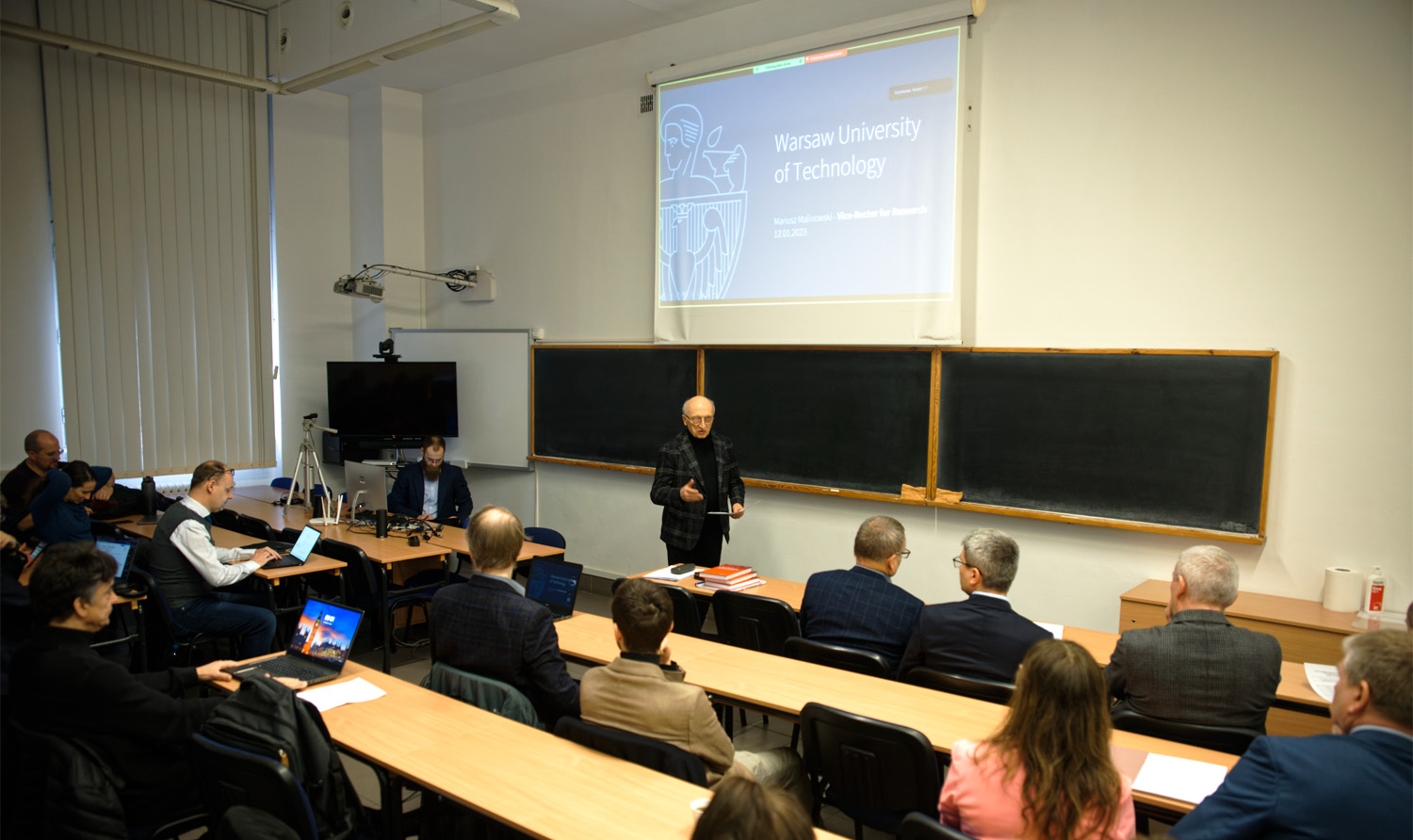How not to give in to too much information?

The OMINO project was officially inaugurated on 12 January 2023 during a meeting at the Faculty of Physics of WUT, photo: Tomasz Murawski
New international project coordinated by WUT
Having access to a variety of messages is both a blessing and a curse of our time. A multidisciplinary team of researchers participating in the OMINO (Overcoming Multilevel INformation Overload) initiative is working on measures to prevent the negative effects of multilevel information overload. This is the first project coordinated by the Warsaw University of Technology as part of the European Union’s Horizon Europe framework programme.
The dictionary definition of information overload (IOL) mentions an excess of messages received at one time, which prevents their effective and proper processing. The effects of this phenomenon are both felt individually and are also visible at the systemic level.
The problem may seem new, but IOL was troubling humanity long before printing was invented. However, the last 20 years have been a particularly interesting period from the point of view of research on information overload – thanks to the development of the fast and widely available Internet, its users could start sending hundreds, thousands, and finally billions of comments and messages every day, contributing to the creation of huge data sets processed not only by individuals, but also by IT systems.
Information pollution
- We could say that IOL is a threat to our information space, the anthropoinfosphere, and should be treated in the same way as air, water and food, says Prof. Janusz Hołyst, head of the OMINO project team and head of the Centre of Physics in Economics and Social Sciences at the Faculty of Physics of the Warsaw University of Technology. - The protection of this space should be carried out within the framework of the ecology of information. As a phenomenon, information overload is usually considered at a single level of the organisation of a complex system, when one mechanism or a specific level is studied – such as the brain/nervous system, a person, a company/institution, or social group – that can ultimately lead to the overloaded individual disconnecting from the system. The effects of IOL occurring simultaneously at different interacting levels, the effects of multi-level information overload, have not been studied yet.”
The OMINO team set out to tackle this challenge and set itself three main objectives: to develop ways to measure multi-level information overload in different systems, to develop IOL models, and to propose appropriate countermeasures to mitigate or even prevent the phenomenon.
Understanding the problem – sharing the solution
As part of the planned work, the partners will focus on a multi-level analysis – from the use of neuroimaging techniques to examine brain activity and neural connections, through individual determinants related to information acquisition and the relationship between information and emotions, to the systemic level, treated as a complex system with many interactions between its elements.
The research is to be not only cognitive, but also to provide tools to those who manage information and influence its distribution. It is no coincidence that OMINO’s partners include two press agencies – Slovenska Tiskovna Agencija STA and APA-IT Informations Technologie GmbH. The project could help similar institutions from around the world in a more effective fight against the distortion of media messages caused by often unconscious thinking patterns (bias). The OMINO project also aims to develop methods useful for a variety of decision-makers, organisations, business leaders and for academia, especially in terms of bibliometric analysis.
Joining forces
OMINO’s great value is its multidisciplinarity. As part of the project, knowledge, experience and skills will be shared not only by physicists and journalists, but also by specialists dealing with modelling of information flow, complex networks, sociophysics, data mining, computer science, neuroinformatics, social sciences, management, and other areas. This combination of competences is intended to meet scientific, technical, economic and social challenges.
The Warsaw University of Technology is represented by the Faculty of Physics (leading) as well as the Faculty of Mathematics and Information Sciences, the Faculty of Electronics and Information Technology and the Faculty of Management. In addition to WUT, 14 institutions from Poland, Great Britain, Germany, Austria, Slovenia, Israel, the United States, Singapore and Japan are participating in the project: Bar-Ilan University, Wrocław University of Technology, Modul University, University of Wolverhampton, Israel Institute of Technology (TECHNION), GESIS – Leibniz Institute for the Social Sciences, STA – a Slovenian news agency, Nanyang Technological University, Rensselaer Polytechnic Institute, University of Pittsburgh, University of Notre Dame, University of New Hampshire, Tokyo Institute of Technology, and APA-IT Informations Technologie GmbH.
More information about the project is available on the ominoproject.eu page.
OMINO has been accepted for funding in the Marie Skłodowska-Curie Actions: Staff Exchanges competition organised as part of the European Union’s Horizon Europe framework programme and will be implemented in the years 2023-2026. The project provides 337 person-months for scientific internships for 59 employees and PhD students (including 18 people from the Warsaw University of Technology). The total budget of this project is EUR 1,550 200 (including EUR 427 800 for WUT). The project received a maximum score of 5.0 from the EU Commission reviewers for the originality and scientific relevance of the proposed research.
Source: www.fizyka.pw.edu.pl







